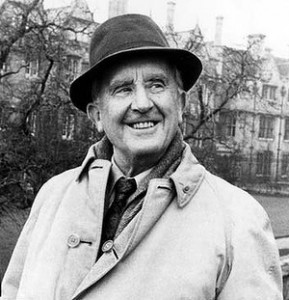 Few things reflexively irk me as much as a Tolkien comparison.
Few things reflexively irk me as much as a Tolkien comparison.
Okay, that’s a bit of hyperbole. But there is an underlying truth — they are irritating.
Why? Because anyone saying “X is the new Tolkien” or “Y is a masterpiece worthy of Tolkien” is, frankly, almost certainly full of it.
The problem is that — just like me at the start of this piece — they are indulging in hyperbole. And yes, I’m looking at you Time Magazine and Lee “George RR Martin is the American Tolkien” Grossman.
That’s not to say I believe that George RR Martin writes drivel. Far from it, I devoured all five A Song of Ice and Fire books in three weeks and found each book thoroughly engrossing. I really enjoyed the knife-edge politics, the interplay of competing agendas, and the unremitting, Hobbesian brutality of Westeros.
For me, the last is a great part of the appeal.
It’s refreshing to encounter an author who is unafraid to dispose of key characters. You viscerally fear for the continued existence of the protagonists as they lurch from crisis to crisis.
And it has an epic sweep of events that spans continents, while hinting at a larger and deeper history.
Yet Tolkien in depth it is not.
Not remotely Tolkienesque
 Anne Hobson in her piece in The Spectator does an excellent job of demolishing this argument. I’ll re-quote what I feel is the key part:
Anne Hobson in her piece in The Spectator does an excellent job of demolishing this argument. I’ll re-quote what I feel is the key part:
Tolkien’s creation displays a sense of depth yet unrivaled in the fantasy genre. In this way, Lord of the Rings is to Game of Thrones as the Atlantic Ocean is to Lake Michigan. In contrast to the invention of Martin’s world, which is secondary to his plotline, Tolkien built his reality from the ground up starting with languages. A famed Oxford philologist, Tolkien created more than twenty unique languages. For Tolkien, language was the building blocks that made up the fabric of his mythology:
“What I think is a primary ‘fact’ about my work, that it is all of a piece, and fundamentally linguistic in inspiration […] The invention of languages is the foundation. The ‘stories’ were made rather to provide a world for the languages than the reverse. To me a name comes first and the story follows.”
It’s worth reinforcing this point.
Although RR Martin’s world-building is excellent, it still lacks the ground-up solidity of Tolkien’s Legendarium. It’s missing Tolkien’s deep feeling of — for want of a better word — historicity (historical authenticity).
In the appendices to the Lord of the Rings alone, Tolkien gives us a historical timeline of the world, a precis of key historical events and figures — not a few of whom play any role whatsoever in the novel itself. There are two different language scripts and notes on pronunciation. There are notes on languages, on the fictitious translation of the original Red Book of Westmarch, and multiple calendars with extensive thoughts about how they inter-relate and overlap.
How is Shire Reckoning descended from the Numenorean calendar? You’ll find the answer in Appendix D. Does the existence of either affect the plot? Not in the slightest as far as I can tell (though I do understand the dates given throughout Rings do precisely correspond with the various phases of the moon that are mentioned in the book itself), but the investment of effort for Tolkien to derive each must have been enormous.


